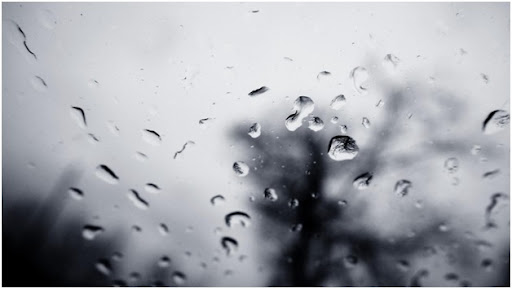During the cooler months, you might notice condensation building on the inside of your windows, especially early in the morning. Surely, any form of dampness in the home is a bad thing, and it should be treated as an immediate point of concern. Right? Not necessarily.
Table of Contents
How Is Condensation Created in the Home?
Condensation on the inside of your windows is caused by a water cycle within the home. In instances of condensation in the winter, it’s caused by humid air. In the winter, humid air — created by our breathing, cooking, and bathing — hits the surface of the glass. Because the glass is naturally colder than the rest of the home, the humid air turns into a collection of water droplets that adhere to the window’s cold surface.
In the summer — when you have your air conditioner running — you may experience condensation on the outside of your windows. This is a reverse effect of the example above; in this instance, the damp, clammy and humid air of the summer is hitting the cool, air-conditioned glass.
Is Condensation on the Outside of Your Windows a Bad Thing?
Ultimately, condensation on the outside of your windows in the summer isn’t a bad sign. It means that the windows are sealing the home effectively and that the humid summer air is staying outside. The glass is keeping the home well insulated, and your air conditioner won’t need to work as hard.
Is Condensation Between Panes of Glass a Bad Sign?
If you have double or triple-glazed windows and you’ve noticed condensation building between sheets of glass, this indicates that the seal has been damaged or that it has corroded, and the window unit is no longer sealed. This is bad for your home’s temperature control and for your bills, as the windows no longer fulfill their purpose: keeping hot air inside in the winter and warm air outside in the summer.
In cases of condensation between glass panes, it’s highly recommended that you chat with window manufacturing and window installation specialists quickly. They may advise replacing the glass or replacing the entire window.
Is Condensation on the Inside of Your Windows a Bad Thing?
This ultimately depends on the age of your windows.
For older, inefficient windows
When condensation streams down older windows, this is unfortunately a bad sign. The seal around the window may be damaged, and the single-paned glass won’t warm up with the ambient temperature of the room, causing a higher condensation level. Left untreated or unchanged, mold and mildew may start to grow around the window and on walls, leading to wood rot.
Now, you might not see condensation in the instance of very old windows, which may be very drafty. A lack of condensation could mean that inside and outside air is flowing freely through drafty windows and seals, which may be controlling the humidity levels in the home. This means that your energy bills will be significantly higher as your thermostat works to maintain a comfortable average temperature.
In the case of new, energy-efficient windows
If your windows are new and energy efficient, some degree of condensation on them isn’t a bad sign. It means that the home is effectively sealed and that less air is leaking in and out of the building. This also means that some moisture is trapped inside the home. There are ways to control this.
Controlling Condensation
If you have newer high-efficiency windows, the experts at Golden Windows recommend taking some steps to control the condensation levels in your home by improving air circulation.
Turn on Overhead Fans
This trick will work in the winter; if you turn the fan clockwise on a low setting, you’re pushing the warm air (which naturally rises) back down to ground level, where it will keep you warm while moving air around the home.
Use Exhaust Fans
Exhaust fans above a stovetop remove both cooking smells and steam from the home. If you have an extractor fan in the bathroom, make sure it’s running while showering and bathing (leave it switched on for some time after a shower, too). By running your exhaust fans in the winter, you’re removing water droplets from the home.
Lower the Humidity on Your Thermostat
If you have a smart thermostat, turn down the humidity control on your furnace to a lower setting.
Open Windows
If it isn’t too chilly outside, open your windows or a door for a few minutes daily to boost air circulation and allow cool, dry air in.
Open Curtains or Blinds
By opening window treatments, you’re allowing air to flow freely around the windows, thus minimizing the potential for trapped air and consequential condensation.
Take Away
A small amount of condensation on new, energy-efficient windows isn’t a bad sign. In fact, it shows that the windows have been sealed in hot air. However, if you’re experiencing streaming windows every morning or a build-up of dampness between panes of glass, it might be time to chat with professionals.





